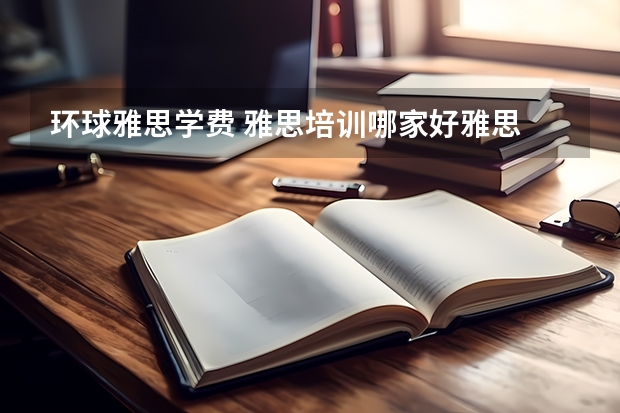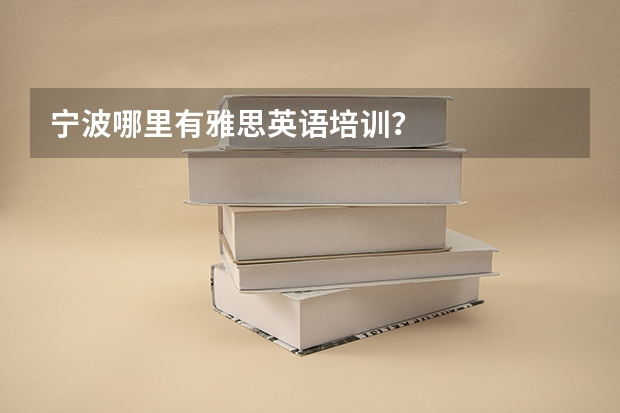雅思口语考试:遇到时尚类话题怎么应付
2024-01-14 19:35:13 | 合力留学网
本文目录一览:

雅思口语考试:遇到时尚类话题怎么应付
接下来我们就拿几个第一部分比较有代表性的口语问题来分析看看如何回答这些问题。1. Q: What kind of clothes do youlike to wear?
本题询问服装种类,我们首先快速地从脑子里搜索到相关的词汇,然后加上符合自己的理由,给出答案。
A: Icertainly fancy simple andcontracted clothing(简约风格)which brings huge comfort and simplicity to me. I know whatsuits me and what doesn’t, so I always wear clothes and never let clothes wearme. Sometimes I buy trendy brands and clothes, but that takes away individuality(个性).
以上答案用到了刚刚补充的服装风格,又交代了原因,后面补充了自身对于潮流服装的看法,考生们大可在直接回答完问题之后扩展开话题,聊一些与服装有关的内容,这样既能展示自身的词汇量和知识面,又能打开新话题。
我们再来看一道题:
2. Q: Do you like shopping?
本题问的是购物,关于购物我们可以说很多,然而为了省时省力我们可以贯彻“拿来主义”,运用前面用到过的词汇等素材来帮助我们答题,所以在直接回答问题之后我们可以把话题引到服装上来。
A:Sure, sometimes I’m crazy about shopping. The eye-dazzling goods(眼花缭乱的商品)and name brands(名牌)in boutiques(精品店)and shopping centres are just so fascinating that I can’t helpmyself to buy them. But mostly, I’m rather rational about what I like, like myfavourite clothing style, thesimple and contracted. Idon't really care whether my clothes are from a name brand, but it’s the styleI fancy and the comfort andindividualityI can enjoythat make me want to buy them.
本题我们也用到了在前面补充的内容,即服装风格和特性。由此可见我们完全可以把已经掌握的知识用于不同的题目中,既丰富了答案,又给自己减了负。
接下来我们再拿一个有关包的题目分析一下如何回答:
3. Q: What kind of bags do youlike?
本题我们运用前面讲到的包包类型来直接回答这个问题,并且我们可以用包包的特征来充当喜欢这类包的原因,答案如下。
A: Ilove shoulder bags(肩背包)mostbecause they have large capacity(容量)so Ican put all my stuff, like my purse, my notebook and several bags ofhandkerchief paper, in it. They are really of high utility and functionality(实用性和功能性).
4. Q: Do you have different bagsfor different occasions?
本题我们首先照实回答我们拥有的包包种类,然后依然可以运用各种不同的包包种类来扩充答案。
A:Well, I should say I merely havetotes(手提包), shoulder bagsandbackpacks(双肩包), and I douse them for different occasions. For example, I use my shoulder bags and totesfor university and backpacks for outdoor activities like hiking or something.But I don't have a clutch(手包)forspecial occasions because I don't have such occasions to attend.
这两题都涉及到了包包的种类,所以我们运用前面讲过的不同种类包包的名称来丰富我们的答案,这些详细的包包名称既能准确的表示你想说的内容,又能有效地让考官听懂,一举两得。
说完第一部分的话题,我们再来看第二部分中一个有关时尚的经典问题:apiece of clothing you wear on special occasions.
有关这道题目的要求如下:
Describea piece of clothing you wear on special occasions.
Youshould say:
Whatthe clothing looks like
Whereyou bought it
Onwhat occasions you wear it
Andexplain why you wear it on special occasions.
拿到这道题我们要关注到这道题的关键词specialoccasion(特殊场合)。特殊场合包括各种典礼,如:结婚典礼、毕业典礼、开学典礼等,也包括一些职业场合,如:面试、采访等,当然也包括舞会、聚会等。如果需要从这些场合中挑一个来描述的话,想必婚礼、毕业典礼和面试是我们同学都多多少少经历过,也是最适合我们同学们来说的了。今天我们就以结婚典礼为背景,结合前面补充的关于服装时尚的知识,来做一个示范。
An one-piece dress(连衣裙)I wore onmy cousin’s wedding ceremony three years ago is the one that I cherish most andchanges me most. It was the very first one-piece dress I bought and I clearlyremember that it was a Dolce & Gabbana. I specially bought it in Shanghaitwo weeks before my cousin’s wedding. To me, it was costly at that time, ofcourse. I bought it because I was firstly invited to be an honoured bridesmaid.I was extremely excited and nervous because I was somewhat about to be thecentre of attention. Speaking of the dress, well, it is short, pink and sleeveless(无袖的)with a lacecollar(蕾丝领边). I adored it so much, but, honestly, it was my first timewearing such one-piece dress, let alone I had to wear it in front of a fairlylarge crowd! So on that day, I was so stressful and nervous that I couldn'teven look people in their eyes. But what surprised me a lot was when my cousinsaw me in this dress, she couldn't stop saying that I was adorable(可爱的)and elegant(优雅的)inthat dress. And surprises were just coming one after another. Almost everyonewho saw me praised my look and gave me confidence. I was quite encouragedbecause I used to wear jeans(牛仔裤)and T-shirts(T恤)day after day. I had never changed my clothing style. But fromthat day on, I tried to change my dressingstyle(穿衣风格)a little bit, and I noticed that change sometimes broughtsurprise and pleasure. So, this dress will always be my favourite, and alwaysbe a remainder that reminds me of the beauty of change.
本文描述了一条粉色、短款、无袖的连衣裙,以及领口是蕾丝质地,品牌是Dolce& Gabbana,非常直观详细地让人在脑海中勾勒出衣服的样子。我们需要注意的是,对物品的描述不能只停留在颜色和大小,而应该更具体一些,并且有几个亮点,如本文的无袖、蕾丝领边,都是使这个物品区别于其他物品的特点,让人印象深刻。其次,我们对物品的描述需要用个人经历和内心活动来使其更具有生命力和表现力,让人感同身受,所以本文加了对连衣裙的态度的转变,让听者跟随说话者的描述对这条裙子产生更贴切的感受。本文并没有用一些华丽的辞藻和句式,但对物品和内心活动的详实描述让人感同身受、印象深刻,这就够了。
基于前面的例子,我们再来系统地补充一下关于各种服装的名称和特征,便于考生选择适合自己的表达,让回答更具体,更独特,更有个人特征(personalised),而不是泛泛而谈,让人转身就忘,无效沟通。
服装名称
ready-to-wear clothes 成衣
evening dress 夜礼服
uniform 制服
dinner jacket 无尾礼服(美作tuxedo)
tails 燕尾服
gown 长睡衣
robe 长袍礼服
coat 女大衣
overcoat 男式大衣
three-quarter coat 中长大衣
fur coat 皮大衣
cloak 斗篷
dust coat 风衣
shawl 大披巾
jacket 短外衣夹克
pyjamas 睡衣裤(美作pajamas)
bathrobe 浴衣
V-neck V型领
lapel (上衣)翻领
cuff 袖口
sleeve 袖子
T-shirt 短袖圆领衫,体恤衫
blouse 紧身女衫
polo shirt 球衣
vest 汗衫
short-sleeved sweater 短袖运动衫
sweater 运动衫
short trousers 短裤
jeans 牛仔裤
skirt 裙子
belt 裤带
underwear, underclothes 内衣裤
divided skirt, split skirt 裙裤
briefs 短内裤,三角裤
underpants, pants 内衣裤(美作shorts)
waistcoat 背心
panties 女短内裤
stockings 长袜
slip, petticoat 衬裙
socks 短袜
suspenders 袜带(美作garters)
tights, leotard 紧身衣裤
材料与花纹
Cotton 棉
wool羊毛
linen 麻
synthetic fabric 混合纤维
acryl 压克力
polyester 伸缩尼龙
nylon 尼龙
worsted 呢料
cashmere 羊绒
tartan plaid 格子花(美作tartan)
dot 圆点花
stripe 条纹
flower pattern 花纹花样
鞋
shoes 鞋
sole 鞋底
heel 鞋后跟
lace 鞋带
leather shoes 皮鞋
patent leather shoes 漆皮鞋
boots 靴子
slippers 拖鞋
sandals 凉鞋
canvas shoes, rope soled shoes 帆布鞋
flip flops 夹脚拖鞋
high-heeled shoes 高跟鞋
裙子
curvy draped dress 紧身垂褶裙
long dress with a revealing ‘up to there’ split 高叉长裙
sequin black dress 亮片小黑裙
one-shoulder cocktail dress 单肩短裙
high-low hemline dress 底边不规则高低裙
sheer lace slip dress 蕾丝吊带裙
mesh dress 网眼裙
Strapless dress 无肩带裙子
考生们可以按照个人喜好、经历和想要表达的内容来选择不同的服装,描述不同的材质和部位,把答案细化,引人注意。
接下来,我们把目光移到口语第三部分的题目上。第三部分关于服装的问题相对于前两部分有了更深入的询问和探讨。以往常会问到的题目包括考生对于年轻人追求时尚的态度,对于时尚的定义,穿着的重要性等等。我们可以发现这一部分的问题明显更深入更引人思考。在这里我们选取三个代表性的问题来分析一下。
1.Q: Do you think it’s important (or, good) to follow the currentfashion in the clothes you wear?
我们在本文一开始就分析了服装的作用,以及对追求时尚的态度。所以我们可以引用前面讲的内容来帮助答题。
A: Idon't think we should put much focus on the current fashion in the clothes.Sure fashion makes you “in”(潮的), but don'tyou think once you are “in”, you are not true you but someone who looks nodifferent from others. I mean, fashion makes us look all the same without our individuality(个性), soto me it’s more important to find my own way of wearing clothes, rather thanfollowing the current fashion.
2.Q: Why do many young people feel it’s important to wear clothes thatare “in fashion”?
本题询问原因,所以我们要分析年轻人追求时尚潮流的目的和心理,我们可以从服装时尚吸引人的地方入手,再分析年轻人的心理。
A:First, I have to say that clothes are more of aform of creative artistic expression(一种创意艺术表达形式), rather than a tool to merely keep us from naked and from climatic changes(防止受到天气影响以及起到蔽体的作用). So theirartisticand aesthetic values(艺术和审美价值)make them apiece of art for individuals to pursue and to follow. Besides, young people aremore concerned about what others are thinking of them, and this is particularlytrue when it comes to their appearance. Following an “in fashion” is like asymbol that says “you are with us” or “you are not left behind”, which makes itfairly understandable that young people are more likely to wear “in fashion”clothes at a very special age.
本题前半部分引用了文章一开始补充的服装的作用,用于说明现代服装的功能有了巨大的转变,预示着追求服装成了一种发展的结果。后半段分析了年轻人处于敏感的年龄阶段,更容易受到他人影响,所以追求服装时尚以求与他人的一致是非常自然且容易理解的。
3.Q: Do you think people tend to judge others by the clothes theywear? (Why?)
本题其实有很多角度可以切入。联系实际我们知道,我们看一个人的穿着主要看是否干净整洁,也看是否根据场合不同而穿着得体。但是我们不会,也不应该,因为一个人的穿着来评断说这个人的好坏。这样答案就显而易见了。另外一个角度可以从年轻人入手。年轻人喜欢追求潮流,所以可以通过一个人的穿着判定这个人是不是与自己是“一伙的”。所以我们可以给出至少两种答案。
A1:First, I have to say that I don't think most people judge others by the clothesthey wear. Sure, we inevitably judge whether the person has a clean andorganised(干净的、有条理的)living habit by whether they wear neatly and tidily. And we aresomewhat concerned about whether people dress smartly(衣着讲究)in differentoccasions. But none of these would we use to judge the quality of a person, or,in other words, whether the person is good.
A2:Well, it’s a pretty hard question because I don't know what all people arethinking. But according to my knowledge, young people are more like to judge aperson by the clothes they wear. If a person wears the latest clothes, youngpeople will think he or she is an “in person”, or at least, “in theirdistinctive group”. Accordingly, it is more likely for them to accept theperson as theirs. And once they accept the person, they don't think the personis bad. So, that's why I think young people tend to judge others by the clothesthey wear.
第三部分的题目比较不固定,所以考生们要掌握最核心的知识,记住最通用的素材,灵活变通,把第三部分的题目化到最简。虽然题目不简单,但我们发现其实文章开始补充的背景知识是非常好用的。只要考生们认真仔细阅读,并依据一个个的题目展开练习,归纳整理,相信很快就能把与时尚相关的题目搞定。

雅思口语Part2答题技巧
下面是环球青藤口语名师王炎龙带来的雅思口语Part2答题技巧:大家好,我是上海环球青藤的雅思口语老师,我叫王炎龙。今天我给大家讲讲我们雅思口语考试中的Part2部分,也是大部分中国学生觉得难的部分。对大多数学生来说,Part2大的挑战就是无法说满2分钟。可大家的问题出在哪里呢?其实是对Part2答题方式的一种误解。我们都知道Part2当中有4个小问题是我们要去完成的任务。可大部分同学会觉得这4个问题当中的后一个重要,想去着重聊后一个,其实不然。在我们雅思口语考试的Part2当中,这4个问题是同等重要的,任何一个问题的回答都要去做相应的扩充。大家觉得说满2分钟很困难是因为几乎都将前2个问题用一两句话带过,这样做是不对的。一是这样其实就加大了回答后面问题的难度,因为留给后面的时间太长了。二是这样做也不符合考试的规范,考官希望烤鸭们对每个问题都能详细地描述。
那么下面我们来看一个例子:
Describe something special you saved money to buy
You should say:
what it was
how long it took you to save enough money to buy it
这前两个问题我们应该这样说:
Today, I’d like to decribe something special I saved money to buy. It is an iPhone4s. You know,iPhone is very popular among the young people in China. Almost everyone knows it. I am a big fan of Steve Jobs.He was a genius and he changed this world completely.I really admire him. I am also an Apple holic.个问题要给一些基本的背景介绍,这样可以占用一些时间哦。
Well. It took me 8 months to save up enough money to buy it.It costs me 5500 RMB. It costs me an arm and a leg.I can still remember during that 8 months, I often went to school with an empty stomach. I rarely pigged out with my friends in the restaurants... Though it was a little painful. I finally had enough money to buy my beloved iPhone.第二个问题你不能就只说你攒钱攒了多久,你还要去描述你攒钱的具体过程,这样就可以展开了。
下面我们再来看一道题目,同样是针对和第二个问题的
Describe an interesting historic place in your country
You should say:
What it is
Where it is
这前两个问题中国学生容易用两三句话一带而过了,我们来给大家分析一下
Today,I would like to talk about an interesting historic place in my country. It’s the Palace Museum. You know the Palace Museum is famous all over the world. Almost everyone knows it.The walls of this museum are red and the roofs are yellow. Because in our culture, red means happiness and good luck. Yellow represents wealth and power.看,是不是非常充分地回答了个问题啊。
This museum is located in the heart of Beijing. Beijing is in located in the north of China. It’s our capital and a beautiful country with a long history. In Beijing, you can also find some other historic sites: the Great Wall, the Summer Palace and the Temple of Heaven. If a foreigner wants to visit China, our capital is a must see. 在回答第二个问题时应该着重去介绍北京这个城市了
大家要切记,每一个问题,尤其是前两个一定要去要去做相应的解释说明,这样时间规划起来就比较科学,每一个问题都回答30秒。不信你试试,你会发现这样是对能够轻松说满2分钟的。今天的解密非常重要,更精彩的内容我们下次再和大家分解。后,祝所有烤鸭们考出好成绩。加油! 如需了解更多雅思培训的相关信息,欢迎拨打环球青藤的免费咨询热线400-060-9663进行咨询,或者点击环球青藤网站页面的“在线咨询”与环球青藤名师直接对话,雅思培训机构,请关注环球青藤。

雅思口语备考之高频话题
雅思口语第一部分高频雅思口语话题,经常围绕考生的personal information 展开,包括:
家乡背景类介绍,如can you say something different about your hometown。
学习工作类,如what is your opinion about your job/major 。
兴趣爱好类,如what do you usually do in your free time 。
经常针对这一类考题所涉及到的话题,最常见的围绕于music, reading, tv, film, sport, internet…
雅思口语第二部分雅思口语话题的考题适当的进行一些延展,可以大体归纳为,衣食住行四大类:
衣-话题,经常围绕于平时喜爱着装的风格进行提问,另外,相应的延展类话题就涉及到了如购物,逛街类的话题,希望同学们要多加注意。
食-话题,如中国传统食物与西方食物的对比介绍,吃饭地点的选择问题,时下受欢迎的饭店的类型,也会更加关注与健康类话题,如:how to lead a healthy life ?
住-话题,住所的类型,小区周围环境,房屋装饰,以及你对于装修风格的品位及态度观点。
行-话题,交通工具类话题,旅游类话题,运动类话题等。 合力留学网
雅思口语第三部分雅思口语话题是围绕第二部分的topic提出的一系列延展类话题,所以重点还是以第二部分为基准,大体归类第二部分考题有五大类:人物类,地点类,事件类,物品类以及高科技类。
人物类侧重于对几类人的提及,famous person, old person, children
地点类则偏向于一个有趣的地方,美丽的地方,有历史风韵的地方等。
事件类围绕发生在你身上最难忘的一件事。
物品类和高科技类有些结合之处,即时下最流行的高科技产品的介绍,或是一个对你很有影响的东西。
高科技类则单纯围绕社会发展中最熟悉的问题进行详细描述。
雅思口语备考之高频话题的内容小编就说到这里了,更多关于 雅思报名 入口,雅思报名时间,雅思成绩查询,报名费用,准考证打印入口及时间等问题,小编会及时更新。希望各位考生都能进入自己的理想院校。
以上就是合力留学网小编给大家带来的雅思口语考试:遇到时尚类话题怎么应付全部内容,希望对大家有所帮助!免责声明:文章内容来自网络,如有侵权请及时联系删除。

简单实用的雅思口语练习方法考生们一定羡慕那些口头沟通流利的人,对话没有障碍。今天好看的成绩单不如说得那么流利。小编带你学习雅思口语练习方法,打破哑巴英语的尴尬。羡慕别人雅思成绩单上的口语7分,羡慕自信流利的谈吐?其实你也可以,抛开传统的雅思口语训练方法吧,小编教你几招实用雅思口语训练方法,一步一步跨越口语障碍,逆袭雅思口语。当然重要的是坚持。雅思口语训练方法虽好,但学习从来没有捷径可

雅思口语考试应该如何选择考试时间雅思口语考一般都是在笔之前参加,但是同学们应该怎么选择自己的口语考试时间呢?以下是环球青藤小编为大带来的雅思口语考应该如何选择考试时间,希望能够帮助大选择合适的雅思口语考试时间。考生可以在雅思考试报名日期截止前两天,而且只有两天时间能够选择口语时间。登录雅思官网选择考试时间。报名截止日期为笔日期前3个周一的凌晨05:00,受公共假期影响的考试报名截止日期会

雅思口语高分技巧分享雅思的口语部分是整个考中难的一个模块,但是只要我们平时的时候注意积累,熟练使用雅思口语技巧也有着密切的联系,今天,给大分享一下雅思口语技巧6大方法解读,希望能对你的口语学习有帮助哦!雅思口语技巧1:怎样用英文简单界定一个东西的技巧。美人和美人交谈80%是想告ont-family:'TimesNewRoman';mso-hansi-font-family:'Time

雅思每月考试时间雅思每月考试时间:笔试为每月第一、二、三个星期六和星期四;口语为每月第一、二、三、四个星期六和星期四。一、雅思考试报名时间:考生可以在雅思官网或当地考试中心官网进行在线报名,报名时间通常为考试日期的2-3个月前。二、雅思考试报名截止时间:雅思考试报名在距考试12个工作日之前截止。雅思考试最好提前1到2个月左右报名,因为雅思考试座位名

请问雅思口语考试时间怎么查口语考试注意事项您好,我是专注留学考试规划和留学咨询的小钟老师。选择留学是人生重要的决策之一,而作为您的指导,我非常高兴能为您提供最准确的留学解答和规划。无论您的问题是关于考试准备、专业选择、申请流程还是学校信息,我都在这里为您解答。更多留学资讯和学校招生介绍,欢迎随时访问。雅思考试分为口试和笔试,口语考试和笔试考试形式不同,考试的时间也不同,那么雅思口语考试

雅思考试什么时候考口语雅思考试官方网站对此是这样解释的:口语考试可能安排在笔试前一周至笔试后一周的任意一天,但尽量会安排在笔试当天下午或笔试次日全天。建议考生务必于笔试前2天登录IELTS报名网站“我的状态”页面查询考号和口试时间。从目前多年考试经验来看,雅思考试的口试会被随机安排在雅思考试日期前1天,雅思考试日期当天下午和雅思考试日期后1天。如果安排在雅思考试日期前1天,雅思考试中

雅思口语考试时间雅思考试官方网站对此是这样解释的:口语考试可能安排在笔试前一周至笔试后一周的任意一天,但尽量会安排在笔试当天下午或笔试次日全天。建议考生务必于笔试前2天登录IELTS报名网站“我的状态”页面查询考号和口试时间。从目前多年考试经验来看,雅思考试的口试会被随机安排在雅思考试日期前1天,雅思考试日期当天下午和雅思考试日期后1天。如果安排在雅思考试日期前1天,雅思考试中心会给

2010年1月23号雅思考试预测我也那天考所以搜集了一些资料也都是网上找来的PAT的写作预测1Somepeoplethinkhighschoolstudentsshouldbeencouragedtoevaluatetheirteachers,butothersthinkitwillresultinlossofrespectanddisciplineinclassrooms.Disc
-
 留学生考试条件 去国外留学需要考哪些考试?
留学生考试条件 去国外留学需要考哪些考试?2023-08-29 18:07:55
-
 如何提高雅思成绩?
如何提高雅思成绩?2024-01-13 21:53:48
-
 环球雅思学费 雅思培训哪家好雅思
环球雅思学费 雅思培训哪家好雅思2024-01-13 02:44:29
-
 徐州环球雅思口语时间 2023年出国留学最新消息说明,增加雅思考场!雅思费用下降!(内附各省雅思考试考点)
徐州环球雅思口语时间 2023年出国留学最新消息说明,增加雅思考场!雅思费用下降!(内附各省雅思考试考点)2024-01-11 09:42:55
-
 日本留学生考试有填空吗 日本留学生考试常识解析
日本留学生考试有填空吗 日本留学生考试常识解析2023-09-06 09:43:20
-
 宁波哪里有雅思英语培训?
宁波哪里有雅思英语培训?2024-01-19 03:33:58